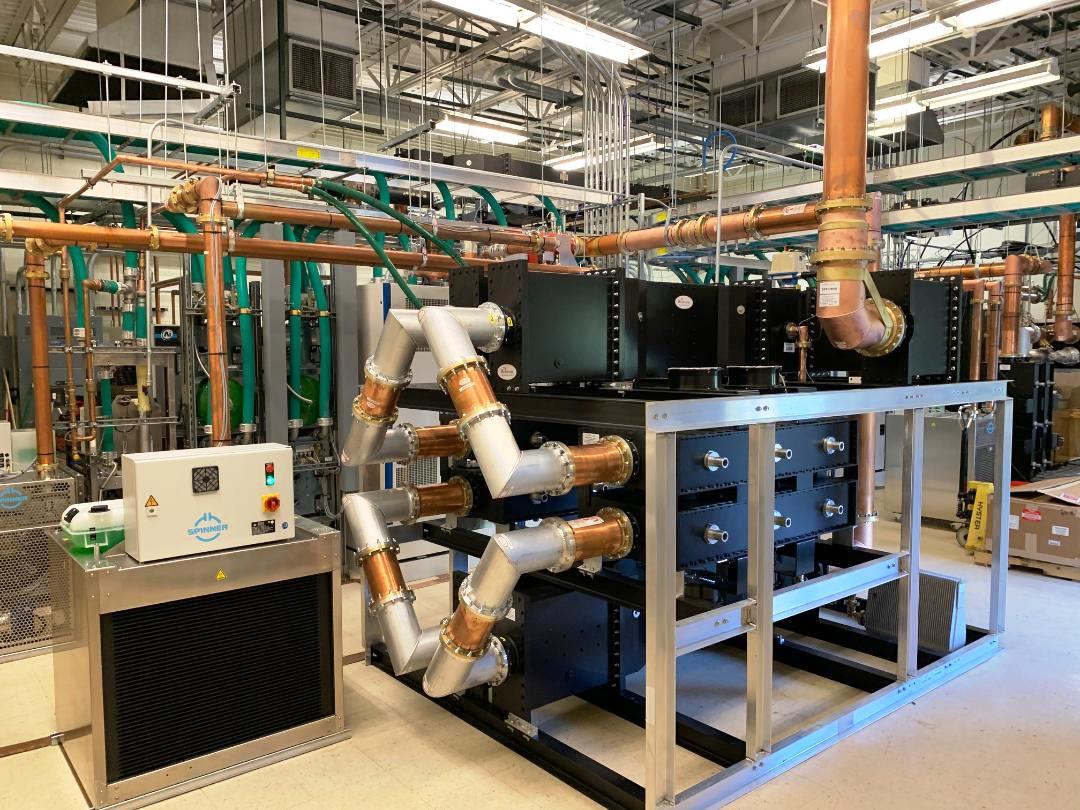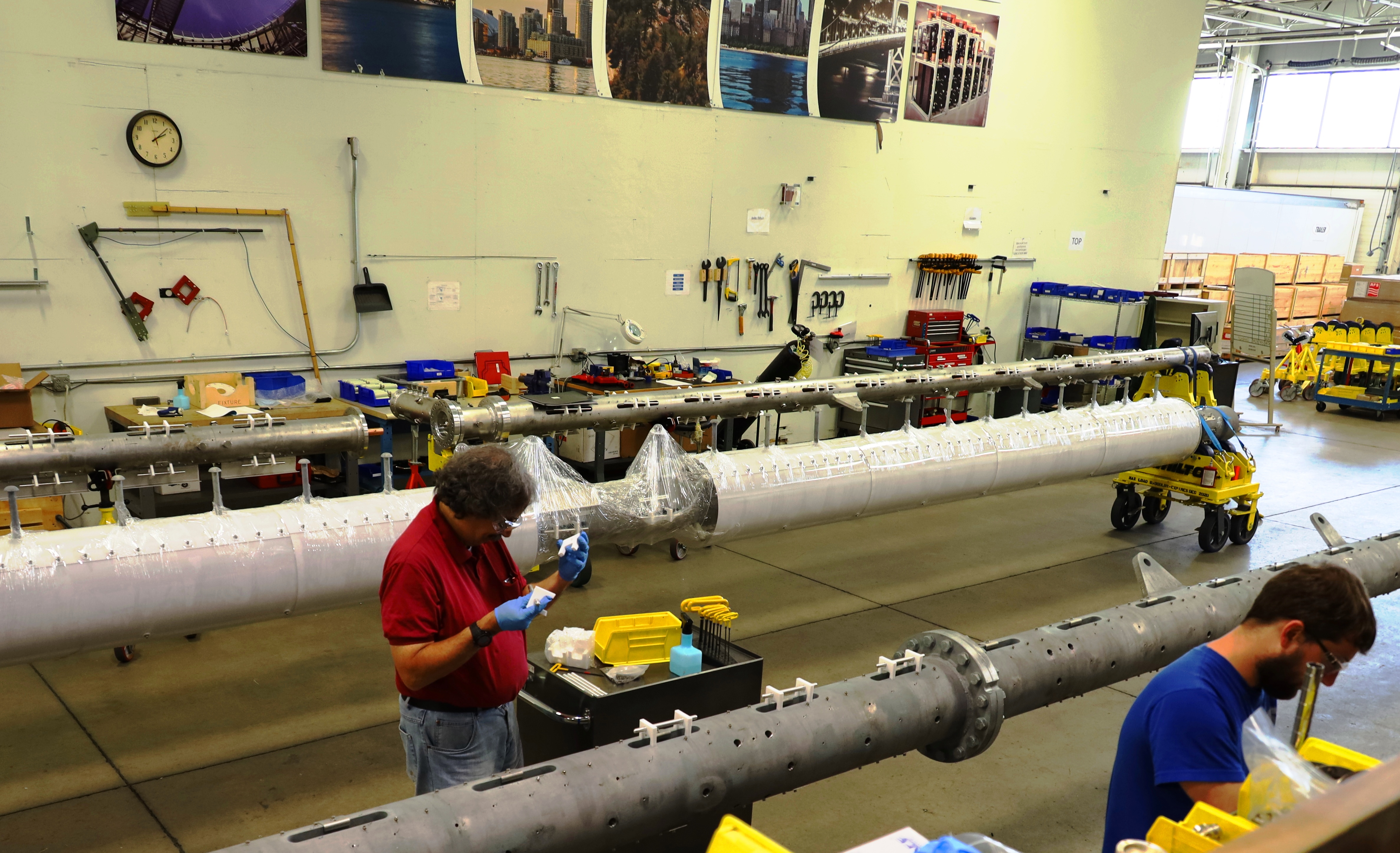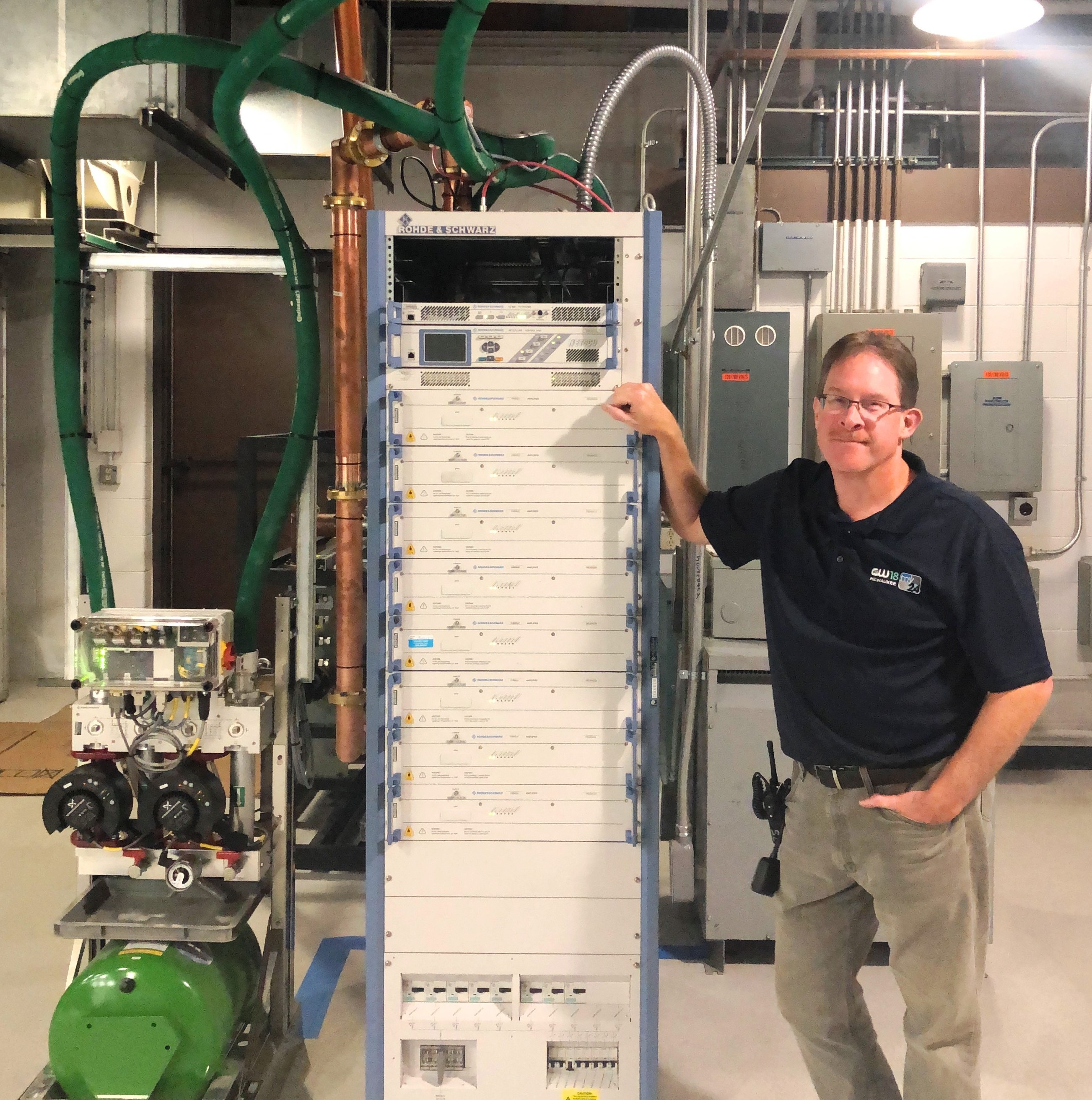FCC Says Repack Progressing Nicely; Others Disagree
ALEXANDRIA, VA.—Last month, as the latest phase of the television broadcast spectrum repack was wrapping up, FCC Chairman Ajit Pai advised the Senate Financial Services Subcommittee that all was going well and “on schedule.”
“We want to make sure it is a smooth transition for everybody,” he said. “And thus far it is.”
However, a number of those within the industry—engineering consultants, station groups, tower contractors—have a somewhat different take on things.
“The wheels are coming off the repack,” declared Bill Meintel, principle of the Meintel, Sgrignoli, & Wallace firm, in reflecting on his experience with some of his television clients and the repack statistical homework he’s done.
REPACK GETS ‘C’ GRADE AT BEST
In examining the numbers of channel transitions fully completed during the first five phases of the repack, Meintel determined that only about 73% of the stations had fully met their objective of moving to a new channel with coverage equal to what they provided with their pre-repack facilities.
As defined by Meintel, a fully successful repack means that a station met its repack deadline fully, is licensed according to the terms of its construction permit, and is providing service comparable to what was offered on its original channel prior to the repack—in other words, no STAs.
The professional video industry's #1 source for news, trends and product and tech information. Sign up below.
In compiling his repack “score,” Meintel said that he drew on a number of resources, determining that at the end of Phase 5 (which was officially concluded on Sept. 19), a total of 528 stations should have been operating on their new channel assignments. However, based on data available in late September, only 388 stations—just 73.5%—had completely finished repacking activities. He observed too, that out of the 984 stations identified as repack candidates, 496 of these were assigned to Phases 6 through 10.
(It should be noted that this article was compiled at the time Phase 6 was ending, and complete data was not available for determining the exact number of stations that were fully transitioned in that phase. However, based on Meintel’s numbers for Phases 5 and earlier, “fully successful” transitions ranged from a low of 45.6 % to a high of 92.5% in those phases, so it’s doubtful that all of the 126 stations assigned to Phase 6 were fully transitioned. Based on Meintel’s numbers for phases five and earlier, it would appear that nearly two-thirds [60.6%] of the overall repack work will have to be completed within the remaining nine months or so in order to make the July 3, 2020, deadline.)
Meintel observed that at the completion of Phase 5, only about 39.4%— perhaps less—of stations being repacked had completely wrapped up their channel moving exercises.
“At 30 months into the schedule, this averages out to 12.9 stations repacked per month,” he said. “At this rate, it will take another 46.2 months [almost four years] to complete the repack. The repack is well behind schedule.”
Meintel is not alone in his belief that progress on the repack has slipped considerably.
“I don’t expect it to be fully completed by deadline—maybe 80%,” said Stephen Lockwood, a senior engineer and partner of the Seattle-based consulting firm of Hatfield and Dawson. “Scheduling problems and the other things that we’ve talked about over the years are serious bottlenecks. Also, a number of entities have not planned appropriately, considering the limited availability of tower crews, qualified personnel to do antenna testing—once they’re in place, structural engineers to work out tower modifications, and even the manufacturing end of things for such things as transmission line.”
John Hidle, a consulting engineer with the Virginia-based Carl T. Jones consulting firm agrees.
“It’s going very slowly,” said Hidle. “A number of the stations we represent are typically making the transition with temporary facilities. We’ve been pretty much able to keep up in Phase 6 with about 40 % of them making the transition. The remaining 60% have been working furiously to put up temporary antennas.”
Hidle said that his firm is working with about 100 stations spread across various phases of the repack, and that the end-point shortfall number predicted by Meintel is likely correct. And as with others interviewed for this article, Hidle identifies the root of the problem as an FCC goal that was way too ambitious; a position that most in the industry voiced when the 36-month construction timetable was announced.
“There are just not enough qualified people,” he said. “A factory can only make so many antennas, and I’ve been told that the two major ones are running at least two shifts every day of the week to keep up with the demand. But people get tired; I’m tired. Everybody is trying their best. Nobody is slacking off. It’s a matter of just how much people can do in a given amount of time.”
SOMETIMES THINGS JUST HAPPEN

And it’s not just delivery of antennas, transmission lines and new transmitters that are factoring into schedule slippage. Accidents happen, humans make mistakes, weather is not always perfect.
Pete Sockett, director of engineering and operations at Raleigh-Durham’s WRAL-TV, related a critical industry shortage that impacted his station’s repack plans.
“We’re behind the repack curve too,” said Sockett. “We converted in Phase 5 and had planned a helicopter lift in October for our two stations and the three others on our tower to replace our top-mounted antennas. However, there’s a shortage of helicopter crews, which disrupted our planning, and now has delayed things until early in 2020. We’re operating with an STA for a temporary side-mount antenna until then.”
Lockwood also cited delays caused by lack of qualified crews to do antenna testing and measurements once a new radiator is in place, and noted that on several occasions his firm has been called in at the last minute to do this because manufacturers’ crews weren’t available.
Harvey Arnold, corporate vice president of engineering for Sinclair Broadcast Group, is overseeing the reworking of facilities for some 100 stations—or about half of the Sinclair television properties— and has seen even the most carefully planned transition schedules fall by the wayside due to unforeseen or unintended difficulties.
“Wind, rain and ice can cause delays, but in our experience, it’s primarily been the wind,” Arnold said. “We’ve had situations where it’s a beautiful day on the ground, but at 1,000 or 1,500, feet up, the wind is blowing so hard crews can’t work. We would schedule a job for two or three weeks and it would take six months. It doesn’t always happen like that, but that’s where schedules can really get delayed and our tower projects get backed up.”
There are many other reasons for unplanned delays. Arnold observed that one of these surfaced at an Oregon antenna site common to several broadcast operations.
“Two stations were being repacked and one was not,” he said. “We found that the antenna we’d planned to use for this site wouldn’t work properly at the lower channel frequency and we had to order a whole new antenna. Replacing the antenna was one issue; finding a tower crew when we needed it was another.
“When you’re dealing with these ‘community’ systems,’ things can take much longer,” Arnold added. “Having to work around FM stations that use the same tower can be tricky, as some have to be shut down when working near these FM antennas. Another issue can arise when you’re combining very high-power transmitters into a single antenna and you have arcing and other problems that weren’t discovered at the factory, as they couldn’t do testing at full-power conditions.”
Arnold related other unplanned situations that resulted in lost time, including misplaced or lost structural drawings in situations where tower modifications were necessary.
“Every call sign is different,” he said, referring to the numerous stations Sinclair has acquired. “I wish we had greenfield sites, but every one was an existing site, and most all have had modifications. It’s pretty complicated. We had an early repack job in Toledo which we found was going to require about half of the tower to be taken down and rebuilt.”
Arnold says they couldn’t wait and and elected to go on the air with lower power and a temporary antenna.
“Needless to say, our coverage was impacted, but we did make the transition date,” he said. ”We have a few markets that are operating at significantly reduced service until we can complete the required tower work.”
LESS THAN OPTIMUM

Sinclair currently has 26 stations operating with STAs, according to Arnold.
“We had five past STAs that have now been cleared for full power,” he said. “So far, that’s a total of 31 stations with STAs. I don’t have an actual count, but hundreds of STAs have been issued for lower power operation so far. You can look at the FCC records.
“We’ve had to go with side-mount antennas and low-power transmitters—five kW—at some sites. I’m sure that we, and other broadcasters, never envisioned temporary antenna systems going on for very long, but here we are.”
And such reduced power operations have inevitably resulted in a loss of service to viewing audiences.
“Many people are viewing over-the-air television, and we’re getting a lot of calls and complaints from the viewers now because of the low-power situation,” said Arnold. “But what can you do? We work hard to provide good over-the-air service. It’s frustrating when we’re not able to reach our viewers.”
Others mirrored Arnold’s comments about operating with less than optimal facilities in order to make the tight channel clearing deadlines.
Bill Harland, vice president of marketing at ERI, a company that manufactures antennas and handles tower work, also acknowledges that stopgap measures are part of the repack landscape.
“We believe the spectrum to be cleared will be cleared by the July 2020 deadline,” he said. “[However] some television stations may not be operating with their fully authorized facilities.”
Brady Dreasler, director of television engineering at Quincy Media, Inc. (QMI), which has stations in multiple U.S. markets, reported that although his company has now cleared the Phase 0, 1, 2, 6 deadline hurdles with only a single station operating with FCC special temporary authorization, that may not be the case as the repack moves into its final months.
“For our remaining stations in Phases 7, 9, and 10, we’ll likely be utilizing STA’s for some time,” he said.
‘NEVER TIME TO DO IT RIGHT; ALWAYS TIME TO DO IT OVER’
The temporary facility aspect of the 2017-2020 repack is a common theme among those interviewed for this article, with all bemoaning the fact that many transitions were having to be done on a temporary basis with a lot more work ahead. When July 3, 2020 rolls around, crews will have to go back and turn temporary substandard facilities into the permanent ones specified under the terms of the station’s CP and license.

“A lot of time and effort is being expended in putting up temporary facilities when we could be completing facilities,” said Hidle. “It’s a matter of ‘oh my God,’ we have to get on the new channel and we have to do something to get to the new channel and then live with this until we can get back to it. The stations that we’re working with are all absolutely serious about getting on their new channels in time. The FCC is pushing this hard and is granting STAs right and left just to say the stations have moved to their new channels.”
“We’re going to have to take some time after the deadline has passed and go back and rework some of the sites as originally planned,” said Arnold. “I know we’ll have to go back and rework more than 25 stations, and we’re probably going to be well into 2021 before it’s all done.”
Dreasler pointed out that work remaining to be performed at QMI’s “completed” sites include two transmission facilities that were awaiting the return of tower crews to raise auxiliary/ interim antennas to the proper height, installation of transmission line switches, completion of HVAC work, as well as repairs to site parking lots that were damaged during tower modification or construction work.
He said that the push of the repack had also left a number of transmission facility maintenance and repair operations on hold, including tower inspections, lighting system replacement, coating of guy wires, tower painting, repairs to radomes, and replacement of microwave dish antennas, or in some cases, new microwave link installations.
Dreasler said too that there were continuing issues involving stations that weren’t repacking, but which operated on a common tower where others were repacking, and are now having to transmit with their licensed auxiliary facilities at reduced power levels.
“We have excellent vendors,” he said. “But they can only do so much. I don’t see the tower crews catching up until late 2021.”
Meintel opined that he had no reason to believe that the repack pace would pick up during its final phases.
“The handicapping factor has not changed,” he said. “There were never enough resources to meet the demand. While I believe that all 984 stations affected by the repack will be operating on new channels by July 3, 2020, a significant number will likely be providing inferior service caused by this completely unrealistic buildout schedule.”
Hidle shared Meintel’s pessimism.
“I do not believe the whole transition will be done by next July,” he said. “Even though all repacked stations might have migrated to their new channels and met the phase deadlines, it’s likely going to take at least another year-and-a-half for these stations to fully complete their authorized permanent facilities.
“There is only so much people can do,” he added. “It’s now the middle of October and the repack is supposed to be all finished by next July—nine months. You can have a baby in nine months, but I don’t think the repack can be finished in nine months.”
The FCC has issued a response to these claims.
For more information on the repack, visit TV Technology's repack silo.
James E. O’Neal has more than 50 years of experience in the broadcast arena, serving for nearly 37 years as a television broadcast engineer and, following his retirement from that field in 2005, moving into journalism as technology editor for TV Technology for almost the next decade. He continues to provide content for this publication, as well as sister publication Radio World, and others. He authored the chapter on HF shortwave radio for the 11th Edition of the NAB Engineering Handbook, and serves as contributing editor of the IEEE’s Broadcast Technology publication, and as associate editor of the SMPTE Motion Imaging Journal. He is a SMPTE Life Fellow, and a member of the SBE and Life Senior Member of the IEEE.

